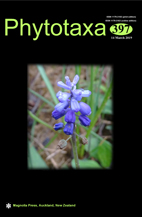Abstract
As part of a taxonomic revision of tribe Urgineeae, and informed by morphological and phylogenetic evidence obtained in the last decade, we present 17 new combinations in Austronea, Indurgia, Schizobasis, Tenicroa, Thuranthos, Urgineopsis, and Vera-duthiea. These are for taxa recently described in Drimia sensu latissimo or otherwise named during the past century. We include type information for all considered taxa and designate lectotypes for Drimia pauciflora, Urginea salmonea and U. sebirii. We discuss recent analytic and synthetic approaches to taxonomic arrangements for the Urgineeae and reinforce the support of an analytic treatment that recognises several genera characterised by distinct syndromes of morphological characters, biogeography and molecular evidence.

